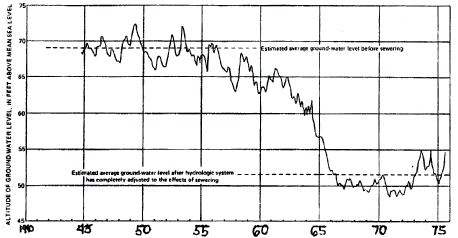Consider whether the calibration data are:
- concurrent in time?
- gathered under equilibrium conditions?
- represent an average over time?
- (e.g. a set of data representing average annual heads
and flows would reflect average annual recharge and pumping and this could
be calibrated under steady state conditions)
- If these situations do not apply, your steady state calibration will be invalid. Of course, we rarely have a perfect situation, so you need to assess the level of acceptability based on the degree of deviation from these situations.
- gathered under equilibrium conditions?
Transient calibration requires an initial condition where "steady state" conditions prevail
recall the long island data during sewering, even though heads varied with time, there were periods which reflected a long-term steady condition
